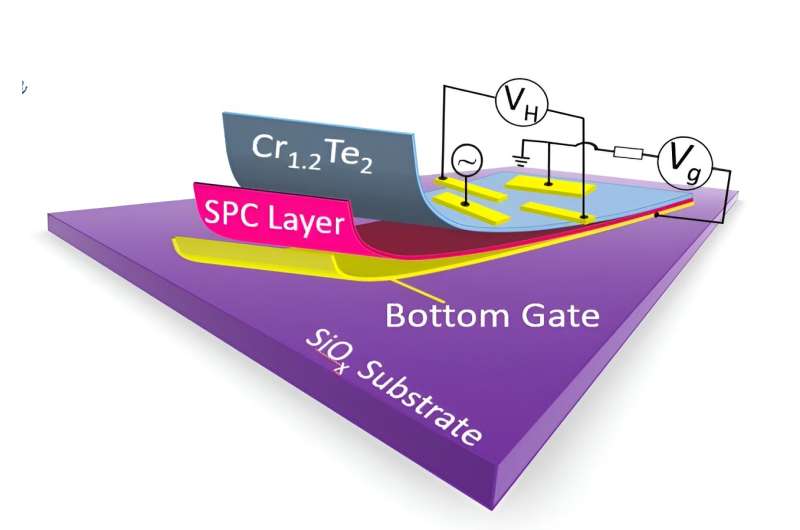This article has been reviewed according to Science X's editorial process and policies. Editors have highlighted the following attributes while ensuring the content's credibility:
fact-checked
peer-reviewed publication
trusted source
proofread
Gate induced room-temperature magnetic phase transition realized in van der Waals ferromagnet nanoflakes

By intercalating protons into van der Waals ferromagnet Cr1.2Te2 nanoflakes, a group of researchers successfully induced a room-temperature magnetic phase transition from ferromagnetism to antiferromagnetism.
The collaboration involved professors from the High Magnetic Field Laboratory at Hefei Institutes of Physical Science, Chinese Academy of Sciences (CAS), Hefei University of Technology, South China University of Technology and University of Science and Technology of China.
The research was recently published on Physical Review Letters.
Controlling the direction of magnetization in two-dimensional ferromagnets is vital for developing super-compact, non-volatile spintronic devices. In traditional spintronic devices, the direction of magnetization can usually be switched by a local magnetic field induced by current or by spin transfer torque. However, the high carrier density in van der Waals itinerant ferromagnets is difficult to tune, which has hindered progress in this area.
In this research, the researchers fabricated high-quality single crystals and found that Cr1.2Te2 nanoflakes exfoliated from these crystals exhibited square-shape hysteresis loops at room temperature, confirming their high practical value.
Further study found that at T=200 K, the magnetism in a 40 nm thick Cr1.2Te2 nanoflake exhibited a non-monotonic evolution against the gate voltage. Specifically, with the anomalous Hall resistivity first increasing and then decreasing.
When the electron doping concentration ne=3.8×1021cm-3 at Vg=-14 V, the anomalous Hall resistivity disappeared, revealing a possible magnetic phase transition.
Theoretical analysis showed that the electron-type doping can be achieved in proton-intercalated Cr1.2Te2, and a magnetic phase transition from FM to AFM can be realized with a critical doping concentration of around 1021cm-3, which is consistent with their experimental observations.
This FM-to-AFM phase transition in a van der Waals magnet at room temperature could lead to improved spintronic devices, according to the team.
More information: Cheng Tan et al, Room-Temperature Magnetic Phase Transition in an Electrically Tuned van der Waals Ferromagnet, Physical Review Letters (2023). DOI: 10.1103/PhysRevLett.131.166703
Journal information: Physical Review Letters
Provided by Chinese Academy of Sciences





















